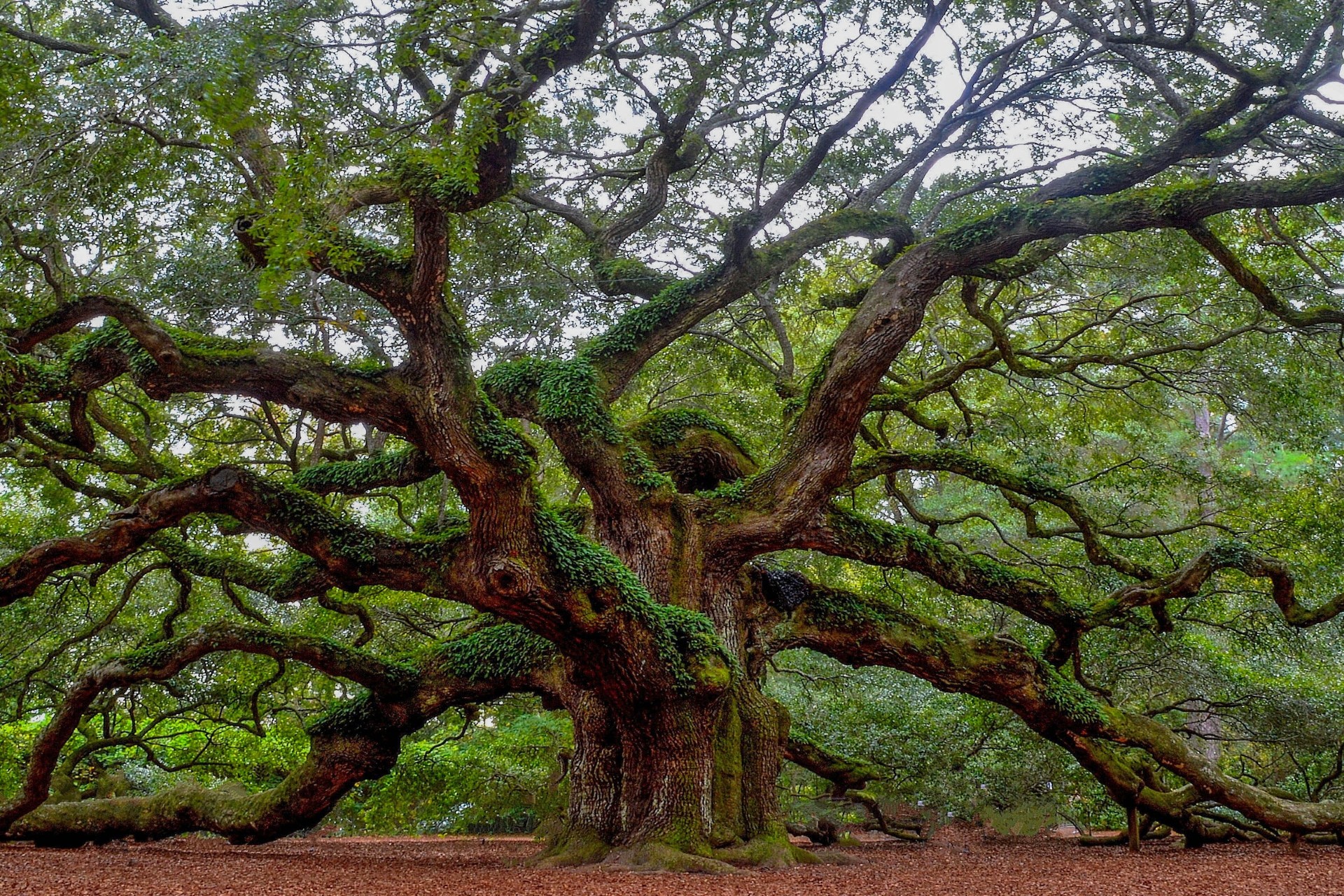
Identifying Different Types of Oak Trees
We are reader-supported. When you buy through links on our site, we may earn affiliate commission.
Picture a typical tree. Odds are you didn’t imagine a palm or sequoia, but rather, one of the most quintessential trees in the world — the mighty oak. Famed for their hardiness and longevity, all oak trees belong to the genus Quercus. Here’s a basic overview on distinguishing between the two broad groups of oaks and how to identify common species.
Red vs. White
There are 600 types of oak trees worldwide, each with distinct habitats, leaf shapes, and growth patterns. People generally divide oak trees into two main categories — red and white. These groups are based on how the trees look and behave.
Where did the two groups get their names? Red oak leaves often turn red in the autumn, while white oaks get their name from the color of their finished wood. But these aren’t reliable ways of telling the types of oak trees apart. For example, some white oak leaves also turn red in the fall, and red oak planks can be pale in color. Instead, look at:
- Leaf Shape
Red oak leaves tend to have spiny tips, with small hairs sticking off of each point. They can also have leaves with jagged angles and lobes spaced further apart. White oak leaves generally have smooth, rounded, closely-spaced lobes with no bristles.
While there are exceptions to the rule, it’s true that red oak leaves usually turn deep red or purple in the fall, while white oak leaves either stay green or turn yellow or brown.
- Bark
In contrast to their sharp, jagged leaves, red oak trees usually have smoother bark than white oaks, giving it a flatter appearance. It almost looks like someone took a sanding block and smoothed the bark down. However, this doesn’t hold true for all species, and some older specimens have deeply furrowed bark.
White oak trees tend to have deeper grooves and taller ridges in their bark, which looks and feels rougher than red oak bark. It often looks thick and scaly.
- Acorns
All oak trees produce acorns, which are their fruit. Each acorn contains a single seed inside its tough outer case.
Wildlife tends to prefer eating white acorns over red because of their lower tannin content. Tannins make fruit taste bitter and act as a deterrent to bacteria and fungi. However, this isn’t a reliable way to tell the types of oak trees apart, since you shouldn’t taste the acorns yourself!
Instead, look at the visual characteristics of the acorns. Red oak acorns have small scales on their cup — the part that looks like a hat — while white oak acorns have a more knobby cap. Red oak acorns are smaller, have a pointed tip, and take two years to mature. White oak acorns are bigger, possess a rounded tip, and take just one year to finish growing.
- Finished Wood
Another way to classify oak trees into red or white is by looking at their wood. This technique isn’t useful for identifying types of oak trees in the field, but it gives you one more way to distinguish them.
Red oak wood looks more porous than white oak wood, with open grains that you may even be able to blow air through. White oak wood is close-grained and has very small pores, making it much more water resistant than red oak wood.
Common Types of White Oak Trees in the U.S.
Forests cover about 30% of the Earth, with oaks comprising a huge portion of North America’s woods. The following types of white oak trees are common in landscaping and in the wild:
- Post Oak
Also called the iron oak, Quercus stellata prefers poor soil in dry habitats along the edges of fields. It typically only reaches heights of around 40 feet, making it one of the smaller species of oaks. However, it can reach a maximum of 108 feet tall. Post oak leaves look almost like jigsaw pieces — they are very smooth and have three perpendicular terminal lobes.
- Chestnut Oak
The scientific name Quercus montana might make you think this tree grows in the Rockies, but it’s actually native to the eastern United States. This medium-sized type of oak tree tends to grow between 59 and 72 feet tall, but there are exceptions to the rule. It has dark, grayish-brown bark with deep ridges. It has the thickest bark of any eastern North American oak.
- Bur Oak
Quercus macrocarpa has light-gray bark with shallow grooves. It produces the largest acorns of any North American oak tree, which is how it got its scientific name — macro means large, and carpa means fruit. It also has a massive trunk that reaches up to 10 feet in diameter.
- White Oak
The name “white oak” describes a larger category of oak, but it’s also the common name for Quercus alba, which is a distinct species. This tree grows in eastern and central North America and has light gray wood. It can reach heights between 80 and 100 feet tall.
Common Types of Red Oak Trees in the U.S.
These red oak trees are common in landscaping and in the wild:
- Black Oak
Don’t let its common name fool you — Quercus velutina is still a red oak! To make matters more confusing, people used to call this species the yellow oak because of the yellowish pigment in the inner part of its bark. Its leaves have deep U-shaped notches and bristle-tipped lobes.
- Northern Red Oak
Some people call Quercus rubra the champion oak. This fast-growing tree can live for up to 400 years. Its bark has ridges with shiny stripes down the center, with the stripes running all the way down the trunk.
- Southern Red Oak
Also called the Spanish oak, Quercus falcata’s leaves die at the end of its growing period and start anew during the next cycle. It typically grows 82 to 98 feet tall, but it can sometimes reach even greater heights. Southern red oak leaves are dark green and shiny on top but rust-colored and hairy underneath.
- Pin Oak
Quercus palustris grows 60 to 75 feet tall. It has a straight trunk and well-formed canopy overhead, with its upper branches growing upward, the branches in the center sticking out straight, and the lower branches hanging down.
What Are Live Oaks?
Interestingly, there are several species of oak trees all called live oaks or evergreen oaks, but they aren’t any more closely related to each other than they are to other oaks. The name simply refers to an oak tree whose leaves stay green throughout the winter — it’s not a specific family or species.
Far-Reaching Trees
Oaks play an important role across the globe. From the swamps of the southern U.S. to China’s hot, open fields, these hardy trees have established themselves as keystone species in countless ecosystems, providing food, shade, and shelter for other organisms. Their strong wood and long life spans have also earned them a place as one of the world’s most beloved trees. They’ve probably been a bigger part of your life than you realize.
Share on
Like what you read? Join other Environment.co readers!
Get the latest updates on our planet by subscribing to the Environment.co newsletter!
About the author
Rachel Lark
Rachel serves as the Assistant Editor of Environment.co. A true foodie and activist at heart, she loves covering topics ranging from veganism to off grid living.





